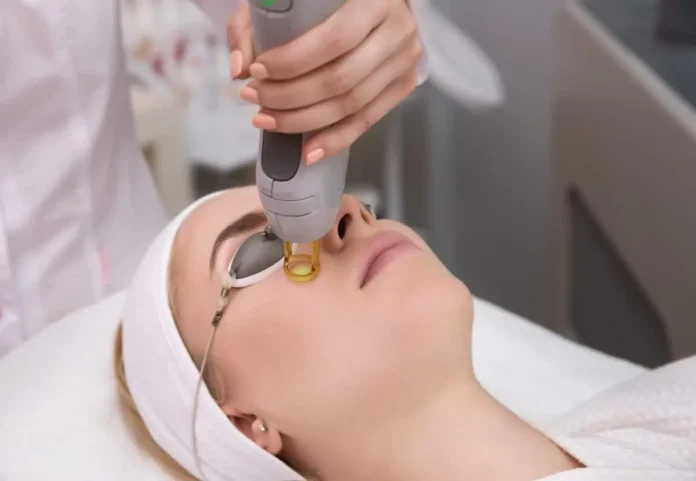Introduction
Laser treatment has revolutionized modern medicine, offering precise, minimally invasive solutions across various specialties. From dermatology and ophthalmology to dentistry and surgery, laser technology continues to replace or enhance traditional methods. This article provides an in-depth analysis of the advantages of laser treatment, exploring its mechanisms, benefits, applications, and its role in shaping the future of medical care.
Understanding Laser Technology in Medicine
The word “laser” stands for “Light Amplification by Stimulated Emission of Radiation.” A laser produces a highly concentrated beam of light with specific wavelengths. Depending on the type of laser and wavelength, it can target different tissues, structures, or pigments without affecting surrounding areas. This precision is a major reason why lasers are extensively used in medical and cosmetic procedures.
There are several types of medical lasers, including:
- CO2 lasers
- Erbium lasers
- Nd:YAG lasers
- Diode lasers
- Excimer lasers
Each type serves specific purposes based on its depth of penetration, absorption characteristics, and heat generation.
Advantages of Laser Treatment
1. Minimally Invasive Procedures
Laser treatments are often less invasive than traditional surgical methods. With no need for large incisions, patients experience reduced trauma to tissues, lower risks of infection, and quicker recovery times. This makes laser procedures particularly suitable for outpatient settings and patients with higher surgical risks.
2. Precision and Accuracy
Lasers can target very specific areas of tissue, such as damaged skin, blood vessels, or tumors, without affecting surrounding healthy tissues. This precision minimizes collateral damage and improves outcomes, especially in delicate areas like the eyes or brain.
3. Reduced Pain and Discomfort
Because lasers can seal nerve endings during the procedure, many patients experience less post-operative pain. The use of topical anesthetics or mild sedation is often sufficient, eliminating the need for general anesthesia in many cases.
4. Less Bleeding and Swelling
Laser beams can coagulate blood vessels as they cut, which leads to less bleeding during and after procedures. This benefit is especially useful in surgeries involving highly vascular areas or when patients are on anticoagulants.
5. Faster Recovery and Healing
Reduced trauma, minimal bleeding, and less swelling contribute to shorter recovery times. Many laser treatments allow patients to resume normal activities within hours or days, compared to weeks required for conventional surgery.
6. Lower Risk of Infection
The heat produced by lasers sterilizes the treatment area, reducing the likelihood of infections. This is particularly beneficial for procedures performed on skin or mucous membranes.
7. Improved Cosmetic Outcomes
Laser treatments often result in smoother skin and less noticeable scarring. For aesthetic procedures, such as skin resurfacing or hair removal, lasers provide highly effective results with minimal side effects.
8. Versatility Across Medical Fields
Laser technology is applicable in a wide range of medical fields:
- Dermatology: Treating acne scars, removing tattoos, skin rejuvenation
- Ophthalmology: LASIK surgery for vision correction
- Dentistry: Gum reshaping, cavity treatment
- Urology: Treating kidney stones, enlarged prostate
- Oncology: Tumor ablation and treatment of precancerous lesions
- Gynecology: Endometriosis treatment, vaginal rejuvenation
9. Reduced Hospital Stay and Costs
Because many laser procedures are outpatient or require minimal hospitalization, they help reduce overall healthcare costs. Less time in the hospital also reduces the risk of complications associated with prolonged stays.
10. Customization and Control
Surgeons can adjust laser intensity, wavelength, and duration depending on the patient’s condition. This level of control allows for tailored treatment plans and greater procedural success.
Real-World Applications of Laser Treatment
1. LASIK Eye Surgery
One of the most well-known laser procedures, LASIK reshapes the cornea to correct refractive errors such as myopia, hyperopia, and astigmatism. Patients often experience improved vision within 24 hours and minimal post-operative discomfort.
2. Skin Rejuvenation and Resurfacing
Lasers can remove damaged skin layers and stimulate collagen production, leading to firmer, clearer skin. This is a popular treatment for wrinkles, age spots, and acne scars.
3. Hair Removal
Laser hair removal is a common cosmetic procedure that uses light to destroy hair follicles, resulting in permanent hair reduction after a few sessions.
4. Tattoo Removal
Q-switched lasers break down tattoo pigments into small particles, allowing the body to naturally remove the ink. While complete removal may take multiple sessions, results are typically effective with minimal skin damage.
5. Cancer Treatment
Lasers are used to remove or shrink tumors, particularly in accessible areas like the skin, cervix, or vocal cords. They can also treat precancerous conditions and reduce symptoms in terminal patients.
6. Dental Procedures
Lasers are used for tooth whitening, cavity treatment, and reshaping gums. They offer painless alternatives to traditional drills and scalpels.
Considerations and Limitations
While laser treatments offer numerous advantages, there are also limitations and considerations:
- Cost: Some laser procedures can be expensive and not covered by insurance.
- Training Requirements: Effective and safe use of lasers requires proper training and certification.
- Multiple Sessions: Some treatments, like tattoo or hair removal, require multiple sessions to achieve desired results.
- Side Effects: Temporary redness, swelling, or pigmentation changes may occur.
- Not Suitable for All Skin Types: Certain lasers may be less effective or riskier for darker skin tones.
Future Trends in Laser Medicine
Advancements in laser technology are rapidly expanding its applications. Emerging trends include:
- Fractional lasers for more precise skin treatments
- Robotic-assisted laser surgery for enhanced precision
- Laser-assisted drug delivery systems
- Portable laser devices for home use
- AI integration to tailor treatment parameters
These innovations are expected to make laser treatment even more effective, accessible, and personalized in the coming years.
Conclusion
Laser treatment has established itself as a cornerstone of modern medicine, offering numerous advantages over traditional methods. Its precision, minimal invasiveness, reduced recovery time, and wide range of applications make it an ideal solution for many medical and cosmetic needs. As technology continues to advance, laser treatment will likely play an even greater role in improving patient outcomes and transforming healthcare delivery. Whether for vision correction, aesthetic enhancement, or surgical intervention, lasers have set a new standard in medical innovation.
